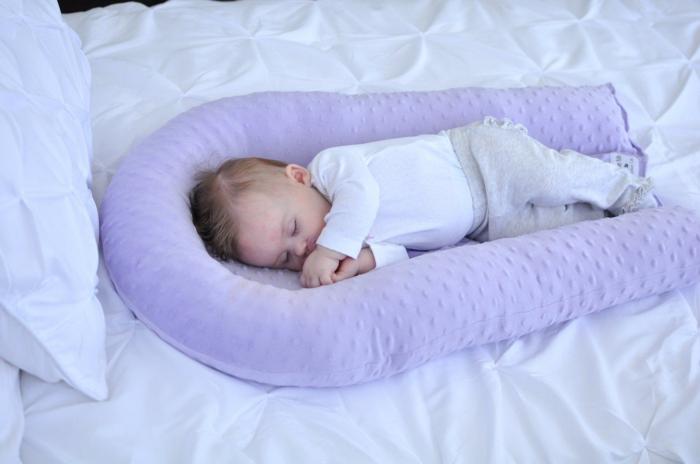As a new parent, ensuring your newborn’s safety is a top priority. One common question that arises is about the safety of using sleep positioners like Sleepyheads. These devices claim to provide a secure sleeping environment for infants. However, there are safety concerns that parents need to consider before using them. In this article, we will explore the safety of Sleepyheads for newborns, how they work, and what alternatives might be safer.
Understanding Sleepyheads
Sleepyheads are soft, padded sleep positioners designed to keep babies in a specific sleeping position. They typically have raised edges to help prevent infants from rolling over during sleep. These devices are marketed as a way to promote better sleep for babies by providing a cozy environment.
Many parents find Sleepyheads appealing because they can make a newborn feel snug and secure. However, it’s crucial to understand the potential risks involved.
Safety Concerns
The American Academy of Pediatrics (AAP) has specific guidelines for safe sleep practices for infants. One of the main recommendations is to avoid the use of sleep positioners. Studies have shown that these devices can increase the risk of suffocation, especially if a baby rolls over or if the positioner shifts during sleep.
In 2016, the AAP reaffirmed its stance against the use of sleep positioners. They highlighted that there is no evidence that these devices prevent Sudden Infant Death Syndrome (SIDS) or other sleep-related deaths. In fact, they may contribute to these risks.
The Risk of Suffocation
Suffocation is one of the most significant dangers associated with Sleepyheads. If a newborn rolls over in their sleep, they can become trapped against the soft padding. This can block their airways, leading to dangerous situations. The risk is even higher for younger infants, who may not have the strength to reposition themselves.
Parents should always be aware that even seemingly safe sleep products can pose risks. Sleepyheads may seem harmless, but the potential for suffocation makes them a risky choice.
Understanding SIDS
Sudden Infant Death Syndrome, or SIDS, is a term that refers to the sudden and unexplained death of an infant, usually during sleep. It is a leading cause of death for infants aged one month to one year. The exact cause of SIDS is unknown, but several factors may contribute, including sleep environment and sleep position.
To reduce the risk of SIDS, parents should follow safe sleep guidelines. The AAP recommends placing babies on their backs to sleep, using a firm mattress, and avoiding soft bedding, toys, or positioners in the crib.
The Importance of a Safe Sleep Environment
Creating a safe sleep environment for your newborn is essential. Here are some key elements to consider:
Firm Mattress: Use a firm, flat mattress covered with a fitted sheet. Avoid using soft mattresses, pillows, or blankets, as these can increase the risk of suffocation.
Back Sleeping: Always place your baby on their back to sleep. This position reduces the risk of SIDS and is the safest sleeping position for infants.
Room Sharing: Consider room sharing with your baby for at least the first six months. This can make it easier for you to monitor them while reducing the risk of SIDS.
No Soft Bedding: Keep cribs free of soft toys, bumper pads, and blankets. Only use a fitted sheet to cover the mattress.
Temperature Control: Maintain a comfortable room temperature. Overheating can increase the risk of SIDS. Dress your baby in light layers and avoid heavy blankets.
Alternatives to Sleepyheads
If you are looking for ways to help your newborn sleep better without compromising safety, consider the following alternatives:
Swaddling: Swaddling can help newborns feel secure. Use a lightweight, breathable fabric to wrap your baby snugly, ensuring that their hips can move freely.
Sleep Sacks: A sleep sack is a wearable blanket that keeps your baby warm without the risks associated with loose bedding. They come in various materials and can be used throughout the first year.
Crib Bumpers: Avoid crib bumpers, as they can pose suffocation risks. Instead, ensure the crib is clear of any unnecessary items.
Rocking or Motion: Gentle rocking or using a baby swing can help soothe your newborn. Just be sure to supervise them closely.
White Noise: Using white noise machines can create a calming environment for your baby, mimicking sounds they heard in the womb.
Educating Yourself
As a parent, it’s essential to stay informed about safe sleep practices. Always consult your pediatrician if you have questions or concerns about your baby’s sleep habits. They can provide valuable insights tailored to your child’s needs.
Keep in mind that parenting is a learning experience. What works for one family may not work for another. The key is to find safe methods that promote healthy sleep for your newborn.
See also: Are Design Dua Bassinets Safe
Conclusion
In conclusion, Sleepyheads may seem like a convenient solution for helping your newborn sleep. However, the potential risks outweigh the benefits. The safety of your child should always come first.
Instead of using sleep positioners, focus on creating a safe sleep environment that promotes healthy sleeping habits.
Prioritize firm mattresses, back sleeping, and room sharing while avoiding soft bedding and unnecessary items in the crib. By staying informed and making safe choices, you can help ensure your baby’s sleep is both restful and safe.
Remember, every baby is different, and what works best will vary. Always prioritize safety and consult your healthcare provider for guidance. Your commitment to your newborn’s well-being is the best gift you can give as a parent.
Related topics:


